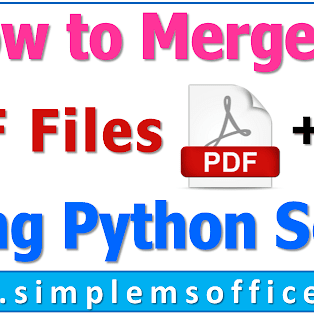We offer a tutorial on how to use functions in Excel. You can
find 50 Excel functions with examples. If you are beginner in Excel, no worry.
We have given very easy examples to understand each function.
We have given very easy examples to understand each function.
After completing this section, you will become an expert at the beginner level. And you will be able to use these functions in your office work.
This section will cover all functions on a basic level.
5 SUMIF() Function: This function used to create a
total from a list of numbers that match criteria set by the user.
6 SUMIFS() Function: This function used to create a
total from a list of numbers that match multiple criteria (more than one
criteria) set by the user.
7 LEFT() Function: This function displays a specified number of
characters from the left-hand side of a piece of text or number
8 RIGHT() Function: This function displays a specified number of characters from the right-hand side of a piece of text or number.
11 PROPER() Function: This function converts the first
letter of each word to uppercase and all subsequent letters are converted to
lower case.
13 DATE() Function: This function creates a real date
by using three normal numbers typed into separate cells.
15 SECOND() Function: The function will show the second
of the minute based upon a time or a number.
23 DATEDIF() Function: This function calculates the
difference between two dates. It can show the result in weeks, months, or years.
24 SMALL() Function: This function examines a list of
values and picks the value at a user-specified position in the list.
25 LARGE() Function: This function examines a list of
values and picks the value at a user-specified position in the list.
28 NOT() Function: This function performs a test to
see if the test fails. (A type of reverse logic).
29 LEN() Function: This function counts the number of
characters, including spaces and numbers, in a cell.
30 TRIM() Function: This function removes unwanted
spaces from a piece of text.
31 CLEAN() Function: This function removes any non-printable characters from text.
31 CLEAN() Function: This function removes any non-printable characters from text.
34 NA() Function: This function is a place marker
used to indicate that required information is Not Available.
36 RANK() Function: This function calculates the
position of a value in a list relative to the other values in the list.
38 COUNT() Function: This function counts the number of
numeric entries in a list. It will ignore blanks, text, and errors.
39 COUNTA() Function: This function counts the number of
numeric or text entries in a list. It will ignore blanks.
40 COUNTIF() Function: This function counts the number of
items that match criteria set by the user.
41 COUNTIFS() Function: This function counts the number of items that match multiple criteria set by the user.
42 COUNTBLANK() Function: This function counts the number of blank cells in a range.
43 TEXT() Function: This function returns a number in a given number format, as text.
44 TRUNC() Function: This function counts the number of items that match criteria set by the user.
41 COUNTIFS() Function: This function counts the number of items that match multiple criteria set by the user.
42 COUNTBLANK() Function: This function counts the number of blank cells in a range.
43 TEXT() Function: This function returns a number in a given number format, as text.
44 TRUNC() Function: This function counts the number of items that match criteria set by the user.
45 VLOOKUP() Function: This function scans down the row
headings at the side of a table to find a specified item.
46 HLOOKUP() Function: This function scans across the
column headings at the top of a table to find a specified item.
48 SEARCH() Function: This function looks for a specified
character or blank space inside cell value.
50 IF() Function: This function tests a condition. If
the condition is met it is considered to be TRUE. If the condition is not met
it is considered FALSE.
So these are 50 excel functions that can help in your daily office work. You can be a champ at the beginner level and can start your job from the basics.







